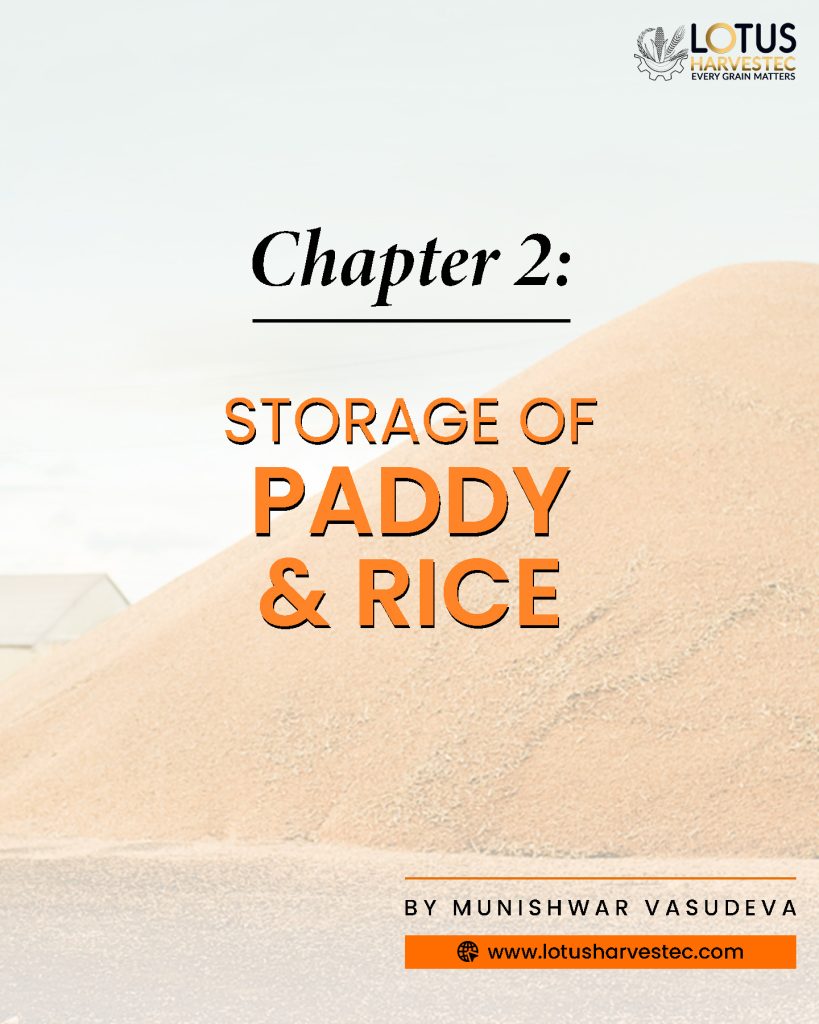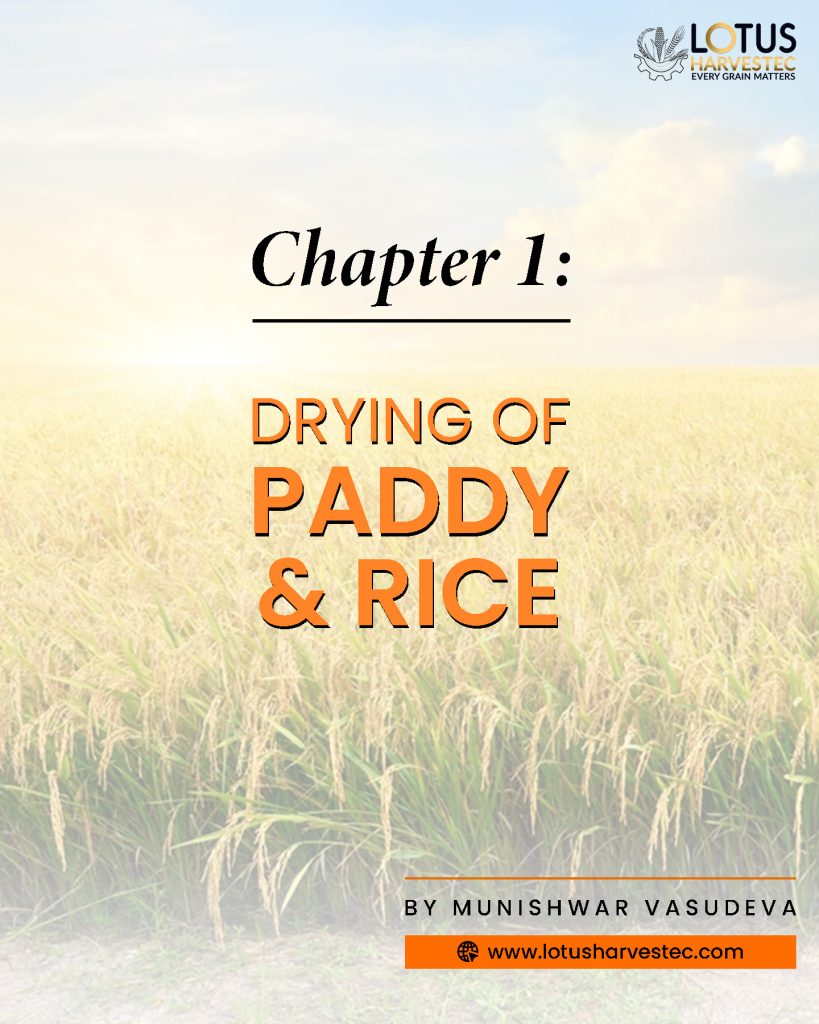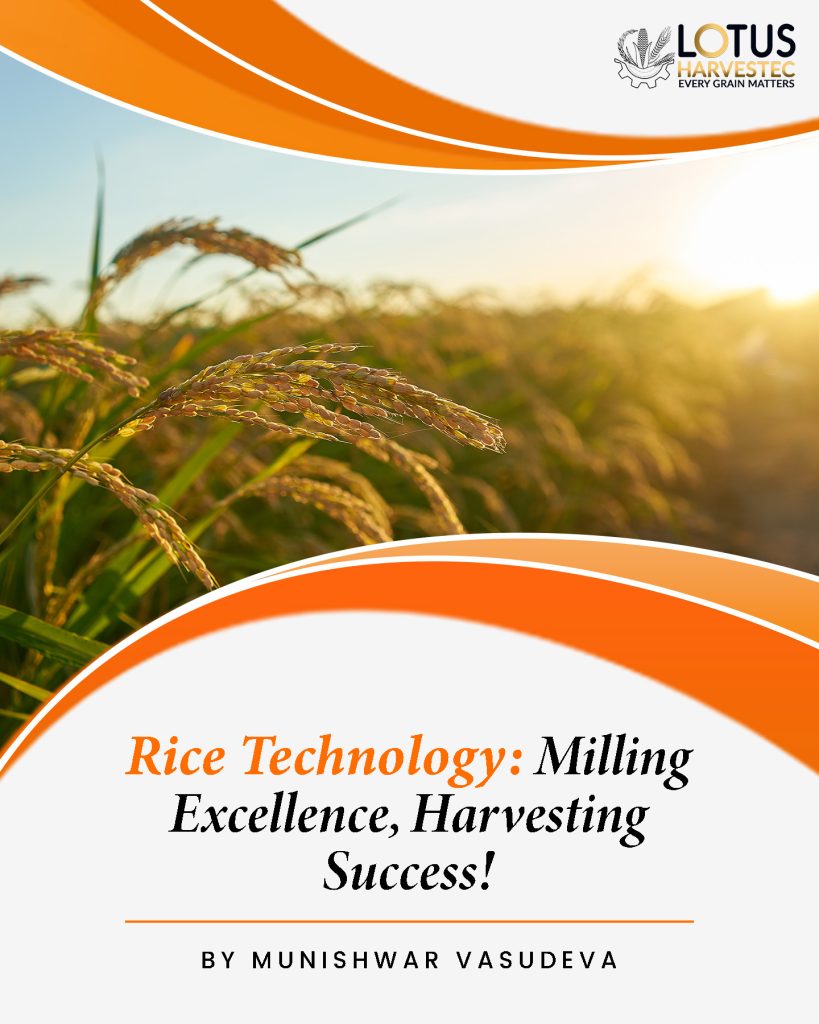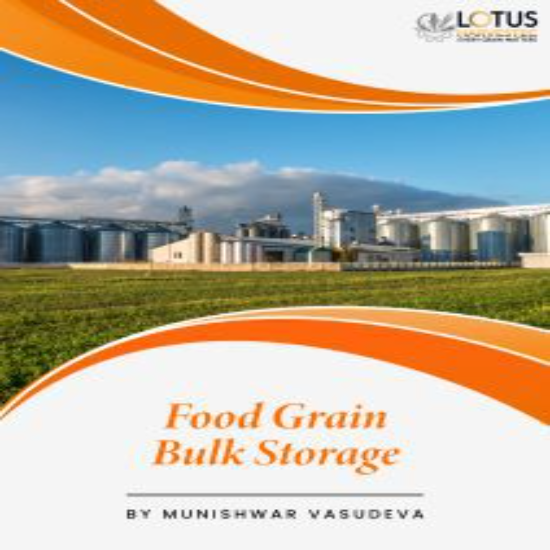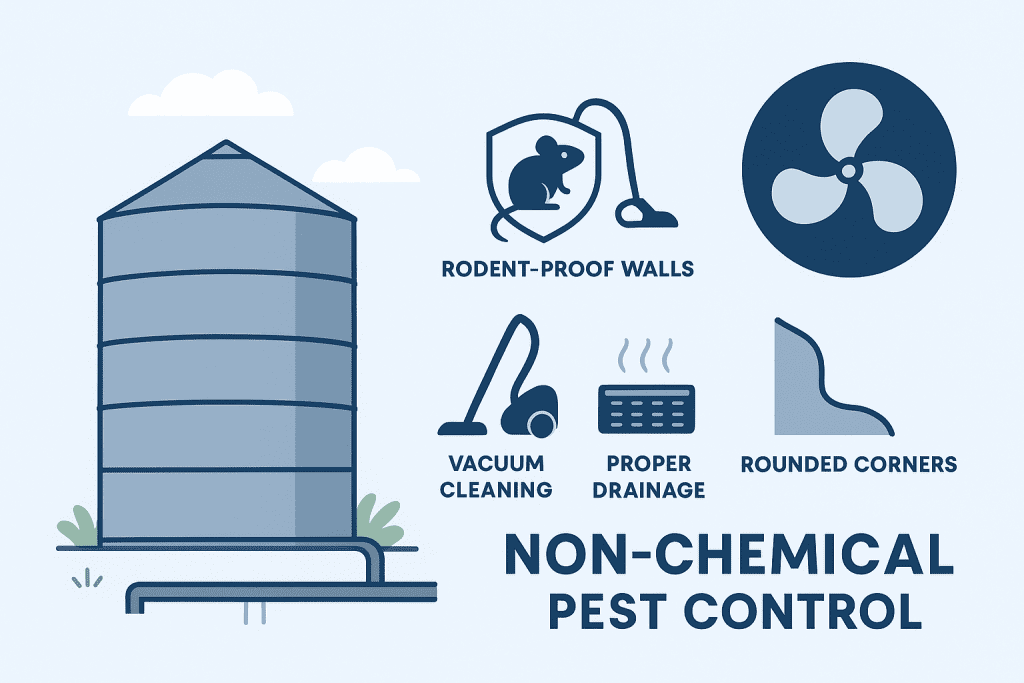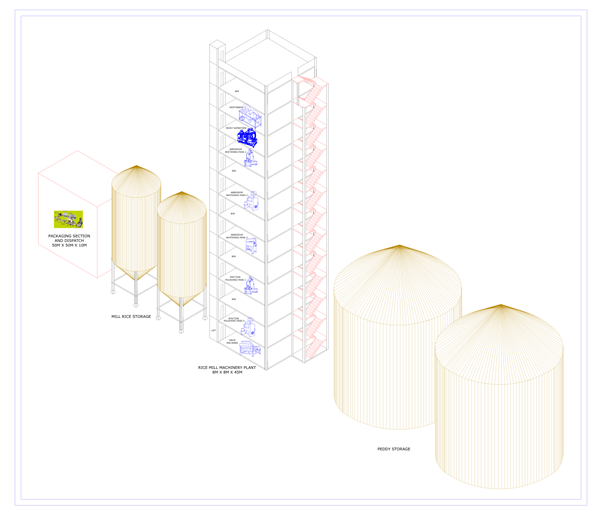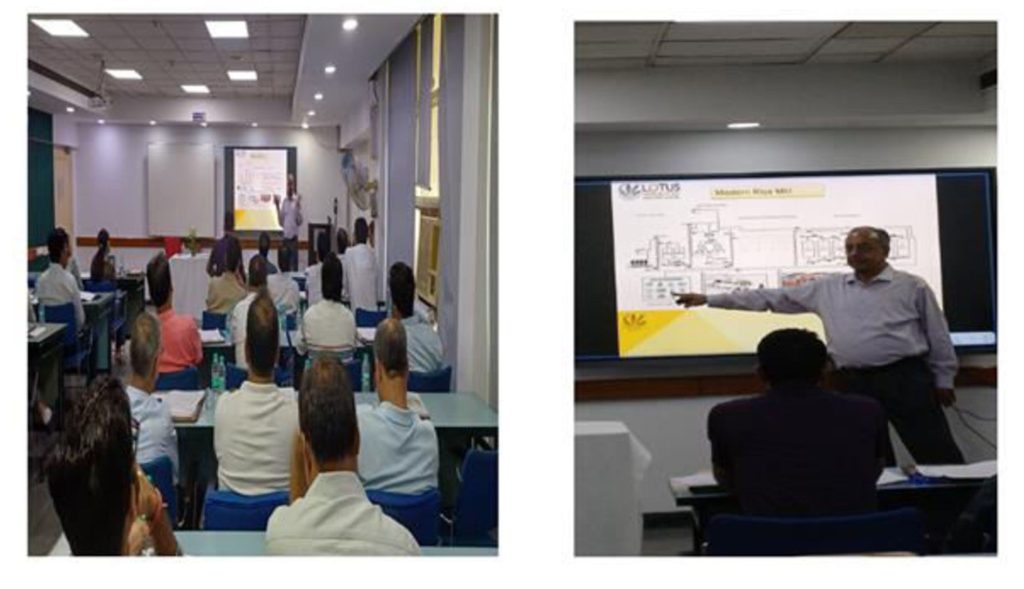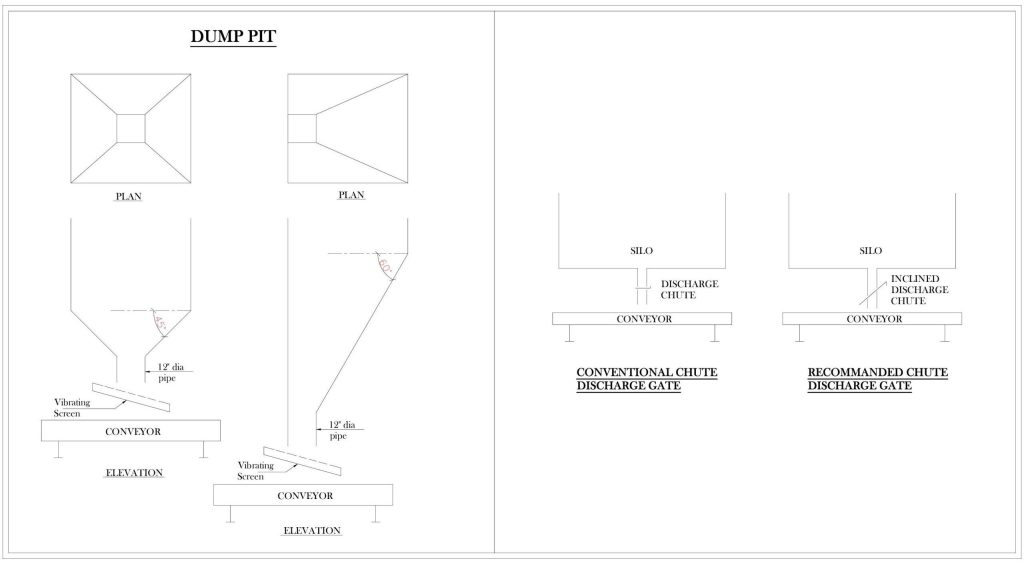Storage of Paddy & Rice
Basmati paddy, being nearly double the price of non-basmati varieties or the Government’s Minimum Support Price (MSP), demands a much higher degree of sensitivity during raw paddy drying, parboiled drying, and safe storage. Over the years, the industry has faced numerous challenges—transitioning from open-stack storage covered with canvas tarpaulins, to covered warehouses, and now to modern steel silos. Yet, a few critical pre-storage steps continue to be overlooked, leading to quality deterioration and breakage of this premium grain. One of the most important—and frequently ignored—steps is tempering the paddy. After drying, paddy must be allowed to rest for 48 to 72 hours before it is stored in bulk silos at 12% moisture. This resting phase allows internal moisture equalization. When tempering is skipped, freshly dried paddy tends to sweat, causing localized moisture accumulation. This becomes a trigger for infestation, fungal activity, and the formation of hotspots, which compromise both yield and quality. In contrast, bag storage of milled rice experiences rapid moisture loss because the endosperm is exposed and reacts quickly to ambient temperature and relative humidity. This sensitivity makes conventional storage methods unsuitable for long-term preservation of high-quality milled rice. Significant progress was made when Purdue University initiated commercial research in 1978, concluding that bulk storage of milled rice becomes safe and stable when the grain is chilled to 15°C. At this temperature, water activity ceases, enabling long-term storage without any moisture loss. While most free-flowing food grains at 12% moisture can be safely stored in bulk without chilling, milled rice specifically benefits from cooling due to its exposed structure. Chilled bulk storage not only prevents moisture migration but also offers non-chemical disinfestation, preserves grain strength, and ensures better milling outcomes. All these crucial principles and scientific insights have been explained in this chapter to guide the industry towards safer, more efficient, and value-preserving storage practices for Basmati and milled rice.

